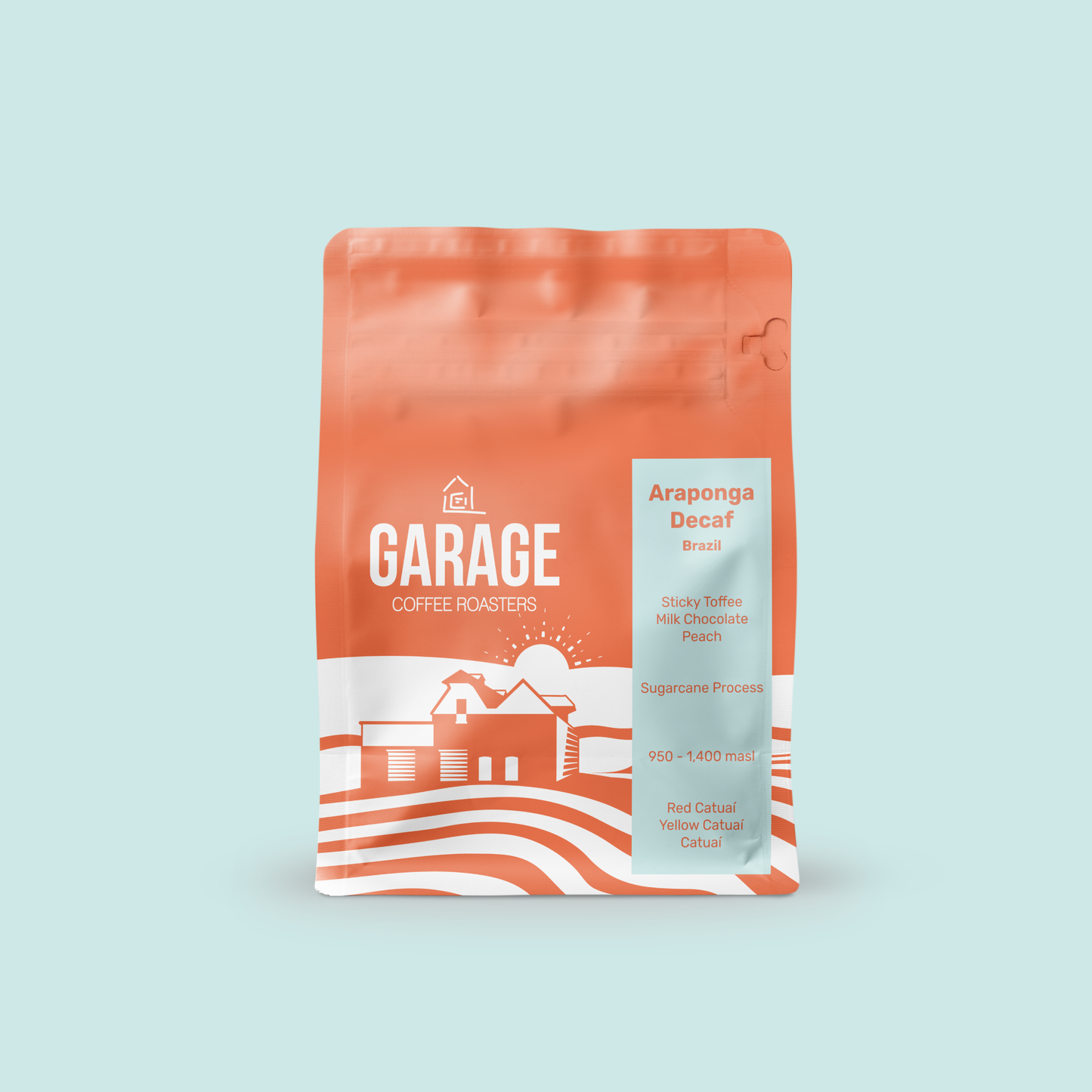Araponga Decaf, Brazil
Araponga Decaf, Brazil
Roaster's Notes
Roaster's Notes
With a clear-skied springtime clarity of cup, this is the decaf for the season - clean, juicy, and perfectly at home amongst blooming flowers and frolicking lambs.
Couldn't load pickup availability
Region
Region
Araponga
Altitude
Altitude
950 – 1,400 masl
Varietal
Varietal
Red Catuaí, Yellow Catuaí, Catuaí
Process
Process
Decaf Natural
‘A man may die, decafs may come and go, but an idea lives on’ - JFK (probably).
It's time to wave goodbye to the Passiflora and wander on to decaffeinated pastures new. Whilst its warm and cosy fireside charm was perfect for a winter brew, the rays of sunshine streaming through the roastery windows left us wanting for something a bit more befitting to the changing of the seasons. Luckily for us, our friends at Keynote Coffee had something pretty special on their list of decaf offerings that they wanted us to take a look at.
With a clear-skied springtime clarity of cup, this is the decaf for the season - clean, juicy, and perfectly at home amongst blooming flowers and frolicking lambs.
Hailing from the renowned Matas de Minas, the Araponga Decaf comes from soil steeped in Brazilian coffee pedigree. The region lives and breathes coffee, the industry accounting for around a quarter of a million of the province's jobs, meaning that over the years the Matas de Minas has become a hub of innovative processing techniques and cultivation methods that ensure that every crop stands out on both a national and international stage. The growers at Araponga are certainly no strangers to this success, receiving a commendation for their exceptional coffees at the prestigious Cup of Excellence in 2017.
A pulped natural, where the skin is removed prior to fermentation, the Araponga retains all of those sweet juicy tones of your common or garden natural whilst also capturing the crisp acidity and cleaner notes that you commonly associate with a washed coffee. In other words, this processing method makes the Araponga the perfect decaf option for anyone seeking a bright and complex cup.
Once fermentation and drying is complete, the beans are then steamed to open their pores (yes beans have them too), and then submerged in a solution of Ethyl Acetate (a by-product from local sugar cane production) and water. The Ethyl Acetate, or EA, extracts and binds to the caffeine before the beans are removed from the tank and steamed once again to remove any residual solution. This process effectively decaffeinates the beans without impacting on the coffee’s quality or flavour.
Share



